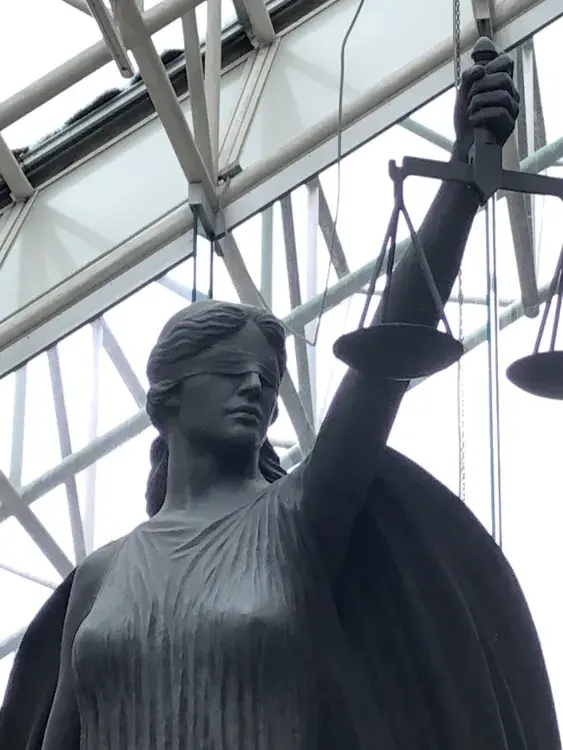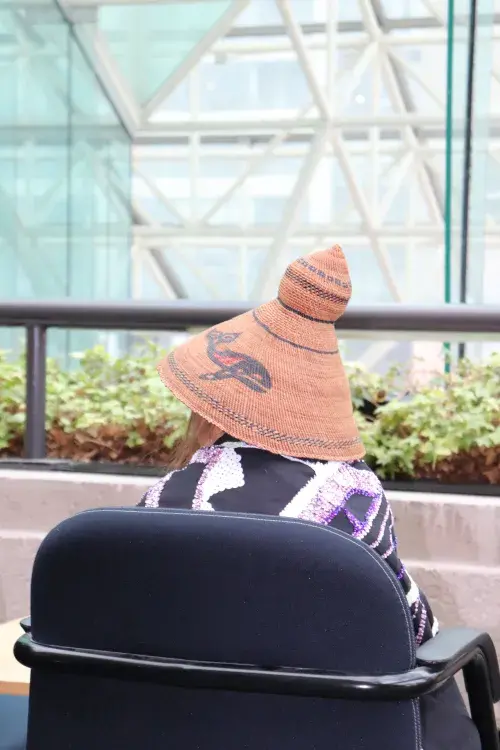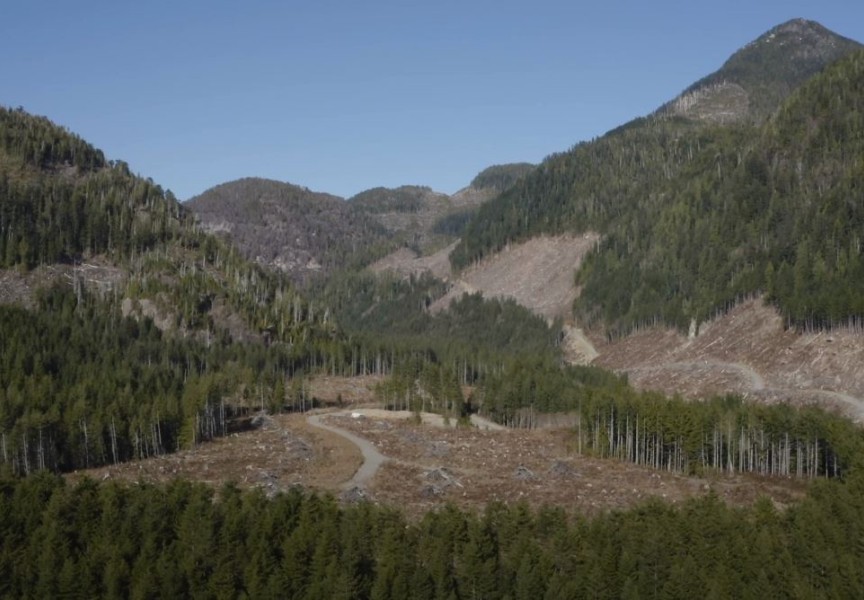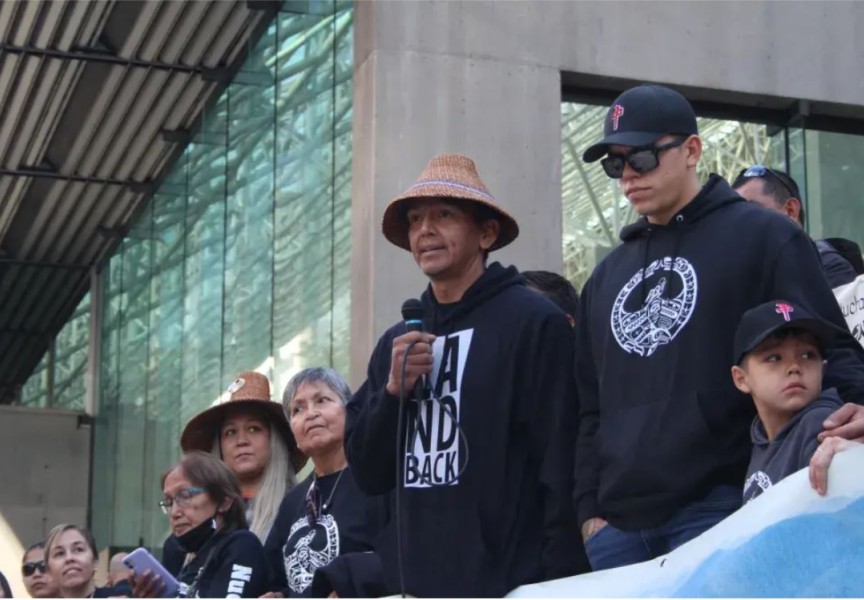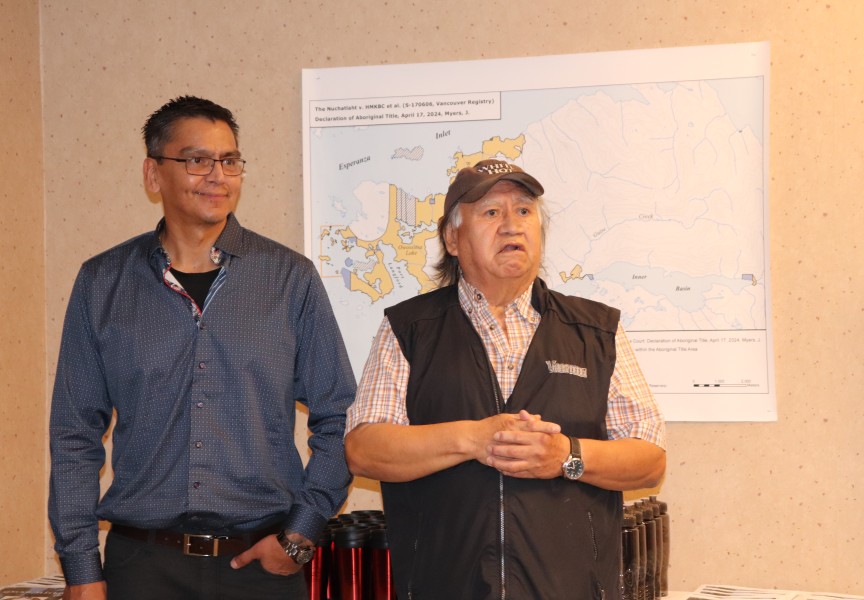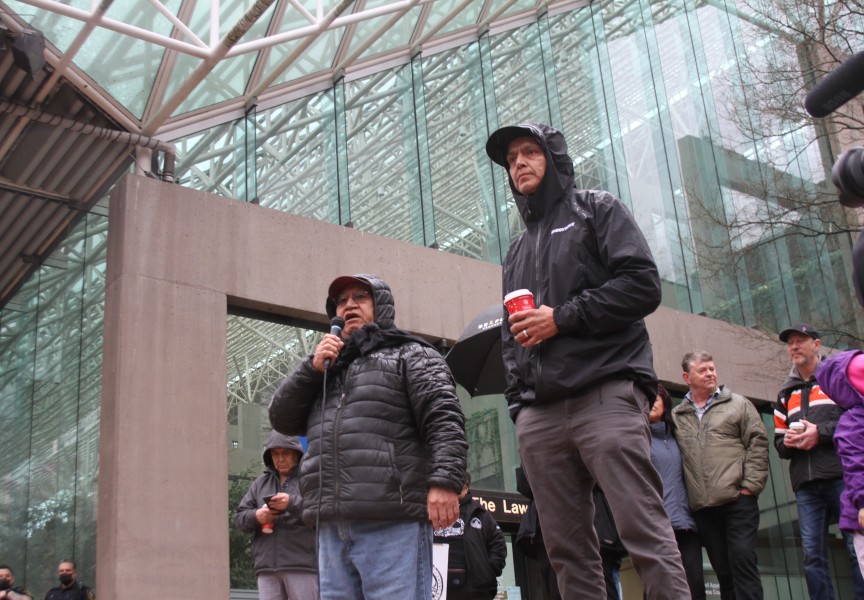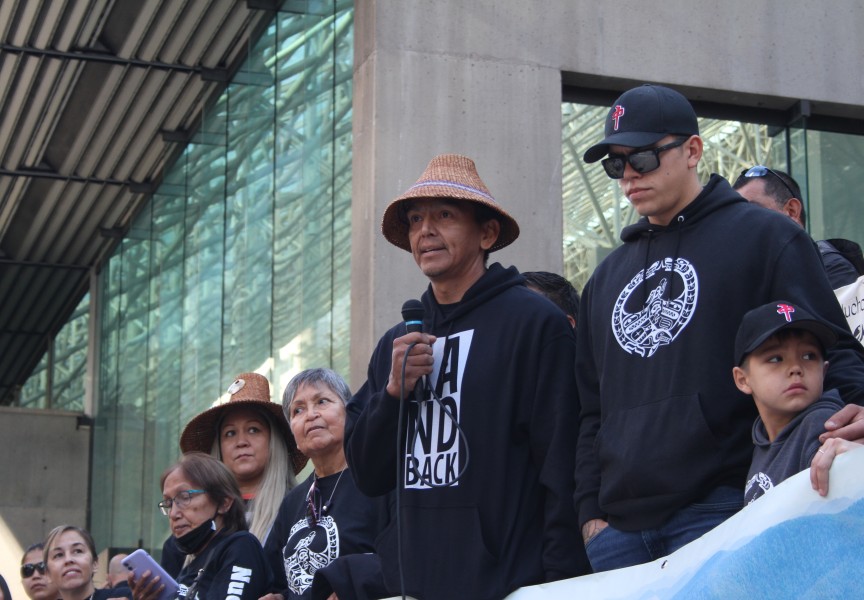The possibility of another trial loomed over the final day of Nuchatlaht’s appearance in the B.C. Court of Appeal, an outcome that would mean the small First Nation will be fighting to gain Aboriginal title over its traditional territory for years to come.
After four days in court from Oct. 20-23, three judges are now tasked to determine if the small First Nation deserves a reconsideration over the extent of their title land on Nootka Island. The Court of Appeal faces the challenge of determining if Justice Elliot Myers erred in his past ruling from the B.C. Supreme Court, a judgement on the extent of Nuchatlaht’s rightful ownership over territory on northern Nootka Island. A decision from the B.C. Court of Appeal isn’t expected until 2026, possibly not for several months.
The Nuchatlaht have claimed Aboriginal title to 201 square kilometres, covering the northern portion of Nootka Island that includes Nuchatlitz Inlet. In his ruling from May 2023 and further clarified in April 2024, Myers determined that the First Nation demonstrated a historical occupation over a portion of this claim area – but not all of it. The court ruled that Nuchatlaht have Aboriginal title to just six per cent of the area they claimed, mostly confined to coastal areas along Nootka Island’s northwest coast.
In his final submission to the appeal court on Oct. 23, Jeff Echols from the provincial government’s legal team stressed that the Nuchatlaht historically had a “very strong maritime and ocean resourced culture”, noting that Myers’ judgement found that the interior regions of Nootka Island weren’t occupied by Nuchatlaht tribes.
“We need that evidence, we can’t just have assertions,” said Echols while court on Oct. 23.
The Nuchatlaht’s case relied upon the presence of thousands of culturally modified trees (CMTs), stands that had been partially harvested but continue to grow in the area the First Nation claims that it historically occupied. But in his judgment Myers found that these trees were, on average, within one kilometre of the coast, indicating that the Nuchatlaht had little use of farther inland parts of Nootka Island that were in the higher elevations.
“We can’t assume occupation based on the fact of CMTs,” said Echols. “The CMT evidence isn’t everywhere.”
The Nuchatlaht’s legal team have countered this view to argue that, as much of northern Nootka Island has been logged, there is likely evidence of historical Indigenous forestry practices that have been destroyed. There is also the traditional Nuu-chah-nulth concept of a chief’s territory stretching far inland to include a watershed that drains from the mountains. This was illustrated in maps made by anthropologist Philip Drucker, who studied northern Nuu-chah-nulth tribes in the 1930s.
In his final submission Echols questioned this concept.
“There are various watersheds, there are watersheds within watersheds,” he said. “Which watershed are we talking about? How does it relate to local group or territory?”
The direction of the case relies upon the Tsilhqot’in decision as a precedent for Aboriginal title. In 2014 the Supreme Court of Canada recognized that this “semi-nomadic” tribe had demonstrated a continued and exclusive occupation of a large area in central British Columbia when British sovereignty was declared in 1846. This applies to 2,000 square kilometres north of ___ - 10 times larger than what the Nuchatlaht are seeking title for on Nootka Island.
During the last day of the appeal Jack Woodward of the Nuchatlaht’s legal team noted documentation of Nuchatlaht speaking with Capt. James Cook when the British explorer came to Nootka Island in late 1700s.
“The nature of their occupation was enough to meet that test,” said Woodward to the three judges in reference to the Tsilhqot’in precedent.
While the B.C. Supreme Court was clarifying the extent of Nuchatlaht’s title area, the First Nation’s legal team pointed to other examples in the world where territorial boundaries stretch far inland, despite settlement being on the coast. Labrador was used as an example, after a boundary dispute arose with Quebec in the early 1900s before Newfoundland and Labrador has become a province within Canada. Quebec and Canada argued that Labrador should just encompass one mile inland.
But in 1927 the Judiciary Committee of the Privy Council in London, which was Canada’s highest appeal court at the time, ruled otherwise. Despite its predominantly maritime culture, Labrador’s boundary went far east to the height of the mountains, including the watersheds that the coastal settlements relied on for their subsistence.
In his judgement on the extent of the Nuchatlaht’s title land, Myers didn’t find this historical decision to be applicable.
“Ascertaining Aboriginal title here is a different exercise,” wrote the judge. “My role is to apply the test set out in Tsilhqot’in and other cases. Having found that there was no evidence of sufficient occupation of the interior area, I do not think it is open to me to award that area based on a principle of international law. That would be a matter for a higher court.”
The Nuchatlaht’s title case was first filed to the B.C. Supreme Court in January 2017, and another trial will likely present an expensive undertaking for a First Nation of fewer than 160 members. So far the Nuchatlaht have benefitted from fundraising with the help of other organizations, including the Wilderness Committee.
“There’s a lot of support, because people want to see change, they want to see better management,” said Nuchatlaht Councillor Archie Little, referencing the province’s past use of the claim area under the Forestry Act. “We look at the tens of thousands of years we were here, where we owned, where we managed, where we enhanced, where we protected, where we accessed, where we shared the resources - and how we were prosperous."

